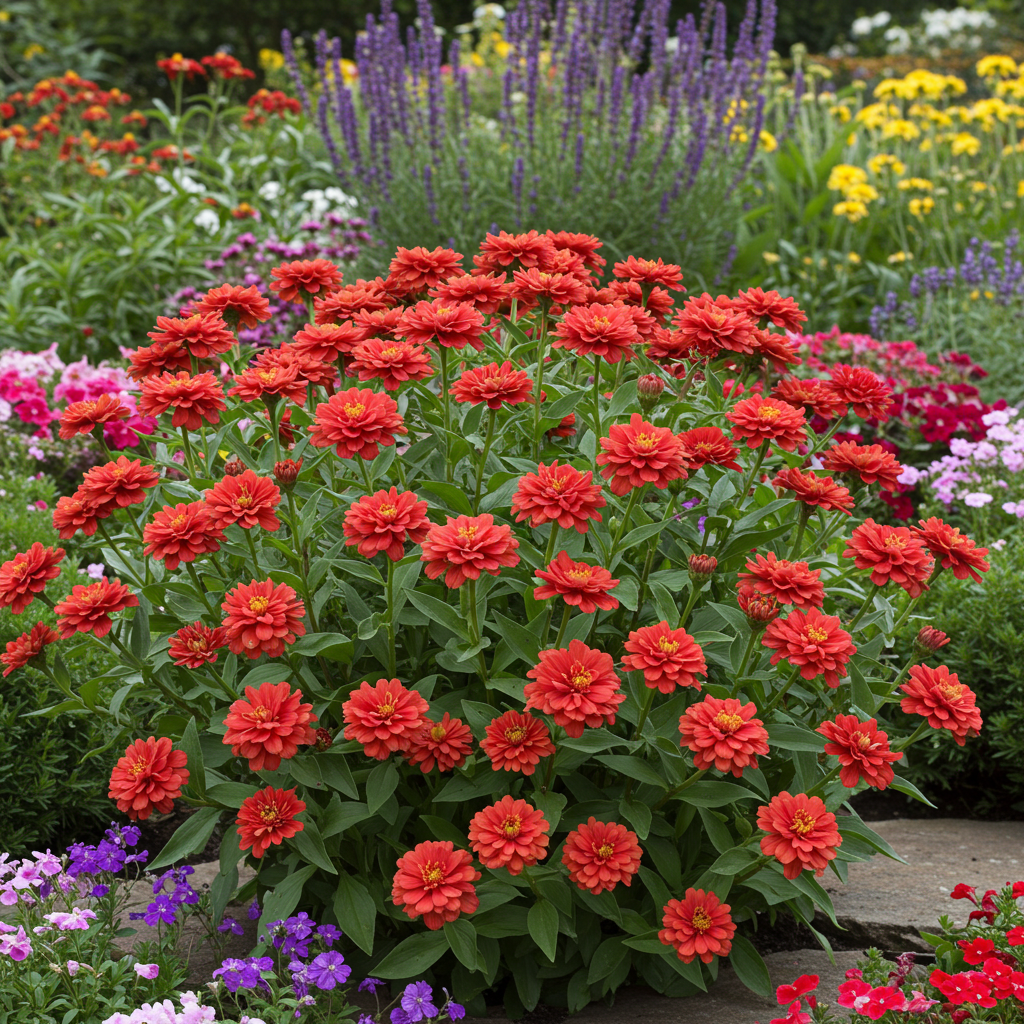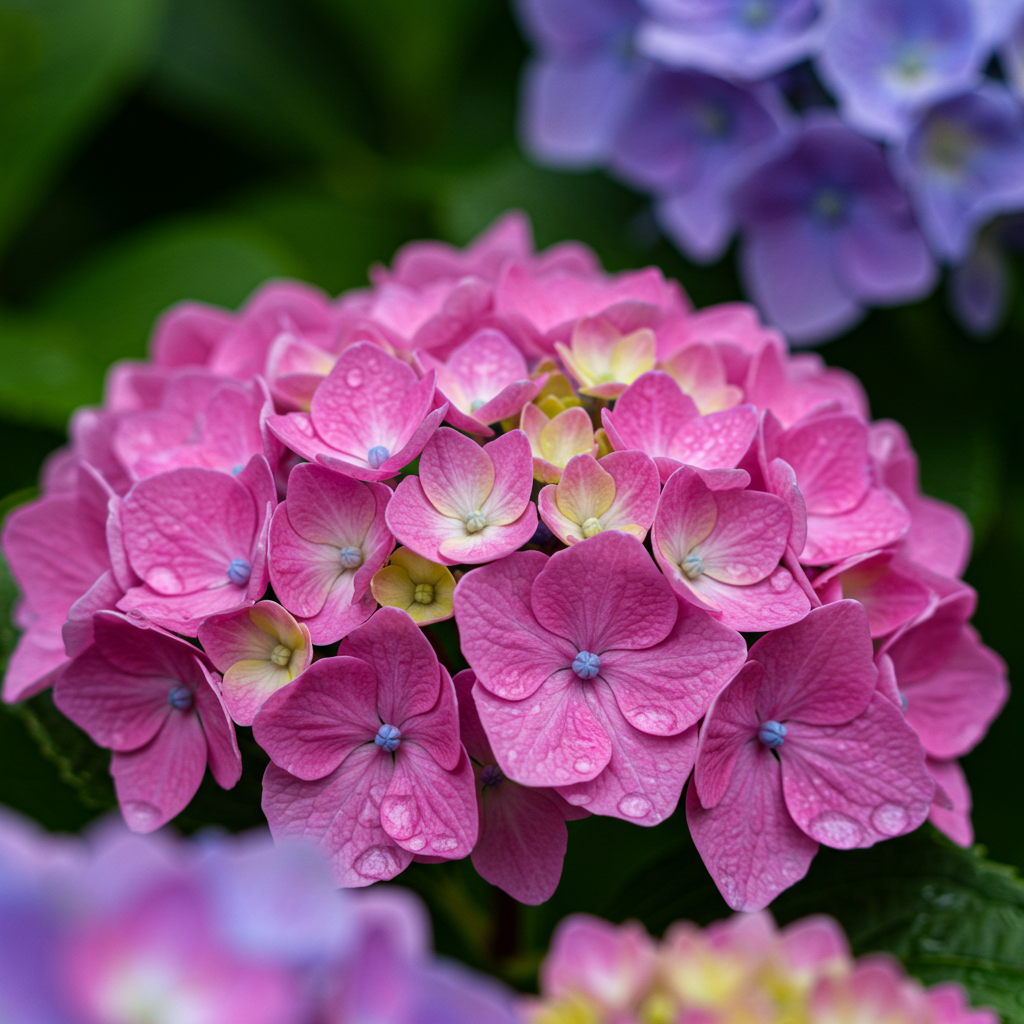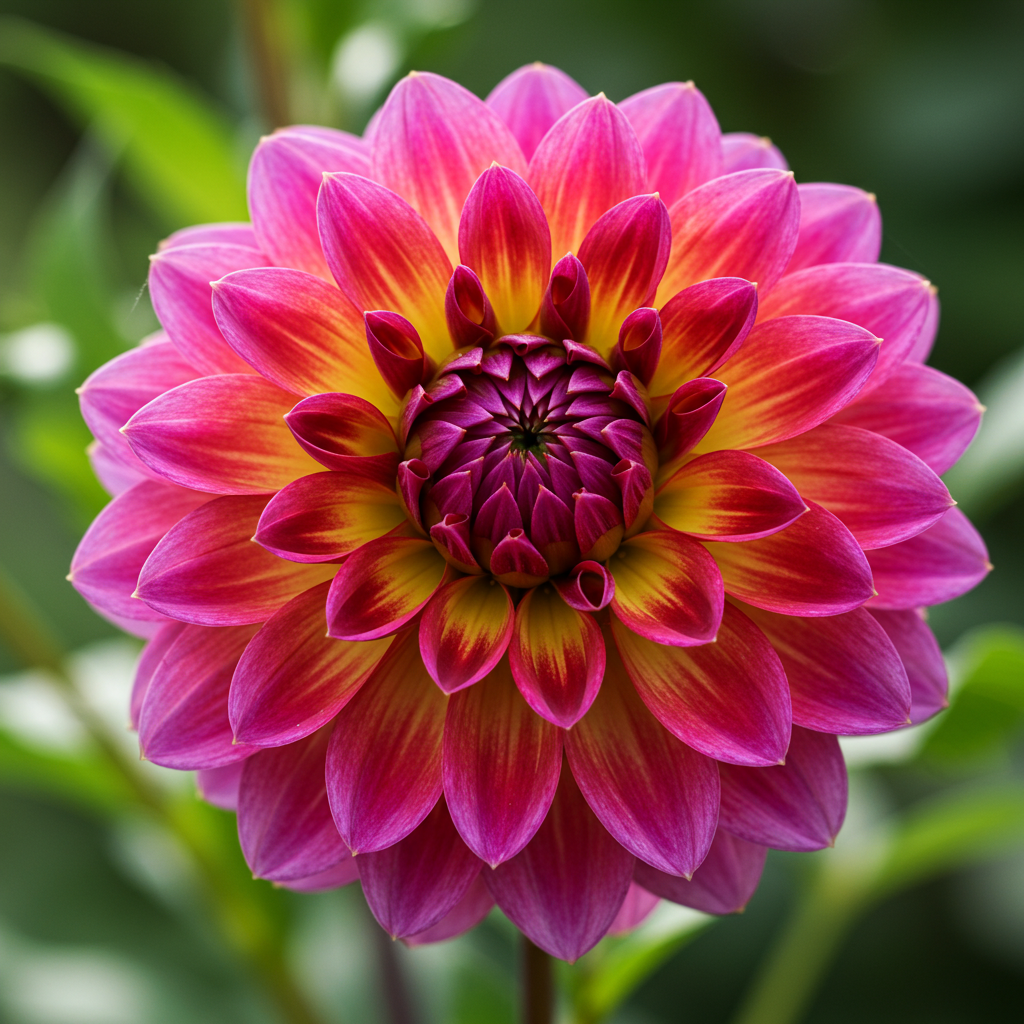Is your outdoor space feeling a little lackluster? Do you dream of a garden brimming with color, fragrance, and life? The secret to transforming any yard, patio, or balcony into a vibrant oasis lies in the strategic selection of breathtaking flowers. Beyond mere aesthetics, the right blooms can elevate your mood, attract beneficial wildlife, and create an inviting atmosphere that beckons you outdoors.
As an expert SEO content strategist and writer, I’m here to guide you through five truly stunning flower varieties that promise to revolutionize your garden. We’ll delve into why these particular plants stand out, what makes them so impactful, and how you can nurture them to achieve their full, awe-inspiring potential. Get ready to embark on a botanical journey that will inspire you to dig in and create the garden of your dreams.
From fragrant perennials to show-stopping annuals, these selections are more than just pretty faces; they are powerful tools for garden design, offering diverse textures, captivating colors, and an undeniable ‘wow’ factor. Let’s explore the floral superstars that are ready to make a significant impact on your outdoor sanctuary.
1. Lavender (Lavandula): The Quintessence of Calm and Fragrance
Few plants evoke such a strong sense of peace and beauty as Lavender. Hailing from the Mediterranean, this aromatic herb has captivated gardeners for centuries with its distinctive purple spires and intoxicating fragrance. Beyond its visual charm, lavender is a sensory powerhouse, transforming any space into a tranquil retreat.
Why Lavender Will Transform Your Space:
- Unparalleled Fragrance: The most celebrated attribute of lavender is its exquisite scent. Planted near pathways, seating areas, or windows, its perfume will waft through the air, creating a truly immersive and calming experience. It’s a natural stress-reducer and a beautiful way to welcome guests.
- Vibrant Color and Texture: The slender, silvery-green foliage provides a beautiful backdrop for the rich purple, blue, or even pink flower spikes. Planted en masse, lavender creates a mesmerizing sea of color and texture that adds depth and sophistication to any garden design.
- Pollinator Paradise: Lavender is a magnet for bees, butterflies, and other beneficial pollinators. Watching these creatures flit among the blooms adds a dynamic, living element to your garden, enhancing its ecological value and overall liveliness.
- Low Maintenance and Drought Tolerant: Once established, lavender is incredibly resilient. It thrives in full sun and well-drained soil, requiring minimal watering, making it an excellent choice for busy gardeners or those in drier climates. It’s naturally deer and rabbit resistant too!
- Versatility in Design: Whether you’re creating formal borders, informal cottage gardens, rockeries, or container plantings, lavender fits seamlessly. Its upright growth habit and appealing color make it a fantastic companion plant for roses, succulents, and other sun-loving perennials.
Essential Lavender Care Tips:
1. Sunlight: Full sun (at least 6-8 hours daily) is crucial for abundant blooms and strong fragrance.
2. Soil: Well-drained, slightly alkaline to neutral soil. Sandy or gravelly soil is ideal. Avoid heavy clay, which can lead to root rot.
3. Watering: Water regularly during its first year to establish. Once mature, it’s drought-tolerant; only water during prolonged dry spells.
4. Pruning: Prune after flowering to maintain shape and encourage new growth. A harder prune in early spring can rejuvenate older plants.
5. Varieties to Consider: ‘Hidcote’ (compact, deep purple), ‘Munstead’ (hardy, early bloomer), ‘Phenomenal’ (robust, cold-tolerant).
Integrating lavender into your garden is more than just planting a flower; it’s an invitation to a sensory experience, a commitment to natural beauty, and a step towards creating a truly transformative outdoor sanctuary.
2. Hydrangeas (Hydrangea): The Grand Dames of Garden Glamour
When it comes to making a grand statement, Hydrangeas are unparalleled. These magnificent shrubs, with their generously sized blooms and lush foliage, exude a timeless charm that has cemented their status as garden royalty. Their ability to deliver consistent, show-stopping beauty from summer into fall makes them a quintessential choice for transforming any outdoor space.
Why Hydrangeas Will Transform Your Space:
- Spectacular, Abundant Blooms: Hydrangeas are famous for their large, often spherical or conical flower heads that create an immediate visual impact. These blooms can range from delicate lacecaps to dense mopheads, providing a textural richness that few other plants can match. Their sheer volume of flowers creates a focal point that demands attention.
- Diverse Color Palette: While many associate hydrangeas with classic blue and pink, their spectrum includes pristine white, vibrant green, deep red, and even multi-toned varieties. What’s truly fascinating about *Hydrangea macrophylla* (bigleaf hydrangeas) is their ability to change flower color based on soil pH – acidic soil often yields blue blooms, while alkaline soil produces pink ones, allowing for a degree of customization in your garden palette.
- Extended Bloom Time: Many hydrangea varieties boast an impressively long blooming season, often starting in early summer and continuing into the first frosts of autumn. This ensures sustained interest and color in your garden when many other plants are beginning to fade.
- Versatile Design Elements: Hydrangeas can be used in a multitude of ways: as stunning specimen plants, in mass plantings for dramatic effect, as elegant borders, or even in large containers for patio appeal. Their varied sizes and forms mean there’s a hydrangea for almost any garden spot, from full sun to partial shade.
- Cut Flower Excellence: The robust blooms make exceptional cut flowers, bringing the garden’s beauty indoors. They also dry beautifully, offering lasting decorative appeal long after the growing season ends.
Essential Hydrangea Care Tips:
1. Sunlight: Most hydrangeas prefer partial shade, especially protection from intense afternoon sun. *Hydrangea paniculata* (panicle hydrangeas) can tolerate more sun.
2. Soil: Rich, moist, well-drained soil. Amend with compost to improve soil structure and fertility.
3. Watering: Consistent moisture is key, especially during dry periods and when plants are establishing. Never let them completely dry out.
4. Pruning: Pruning depends on the variety. Old wood bloomers (macrophylla, oakleaf) should be pruned after flowering. New wood bloomers (paniculata, arborescens) can be pruned in late winter/early spring.
5. Fertilizing: A balanced slow-release fertilizer in spring can encourage vigorous growth and blooming.
With their unparalleled beauty and robust nature, hydrangeas are a sure bet for anyone looking to infuse their outdoor space with elegance, drama, and enduring charm. They are truly the grand dames of the garden, ready to adorn your landscape with their magnificent presence.
3. Peonies (Paeonia): The Epitome of Romantic Elegance
For a touch of classic romance and unparalleled grandeur, look no further than Peonies. These exquisite perennials, with their large, often fragrant, and opulent blooms, have been cherished for centuries as symbols of prosperity, honor, and beauty. Though their bloom season is relatively short, the sheer spectacle they offer makes them an indispensable choice for transforming your outdoor space into an area of breathtaking elegance.
Why Peonies Will Transform Your Space:
- Stunning, Luxurious Blooms: Peony flowers are simply magnificent. From tightly packed, ruffled bombs to delicate single petals surrounding a golden center, their forms are incredibly diverse. Their size alone commands attention, often reaching 6-8 inches in diameter, making them true garden showstoppers.
- Intoxicating Fragrance: Many peony varieties emit a rich, sweet perfume that can fill an entire garden space. Planting them near windows or seating areas ensures you’ll enjoy their intoxicating aroma, adding another sensory layer to your outdoor experience.
- Incredible Longevity: Peonies are legendary for their lifespan. Once established, they can live for decades, even generations, becoming a treasured part of your garden’s legacy. This makes them an investment in beauty that continues to reward year after year.
- Architectural Presence: Even when not in bloom, the dense, deep green foliage of peonies provides a substantial, architectural presence in the garden. They create a lush backdrop for other plants and add a sense of established maturity to your landscape.
- Cut Flower Royalty: Peonies are one of the most sought-after cut flowers. Their impressive size and beauty make them ideal for spectacular arrangements, bringing a piece of your garden’s grandeur indoors.
Essential Peony Care Tips:
1. Sunlight: Peonies thrive in full sun (at least 6 hours daily). While they can tolerate partial shade, too little sun will result in fewer, weaker blooms.
2. Soil: Rich, fertile, well-drained soil is essential. Amend with plenty of compost before planting. They prefer a slightly acidic to neutral pH.
3. Planting Depth: This is crucial! Plant herbaceous peony roots with the ‘eyes’ (growth buds) no more than 1-2 inches below the soil surface. Planting too deep is a common reason for a lack of blooms.
4. Watering: Water regularly during dry spells, especially in their first year. Once established, they are somewhat drought-tolerant but appreciate consistent moisture during bloom time.
5. Support: Large, heavy blooms, especially after rain, can cause stems to flop. Provide support with peony rings or stakes before the plants get too tall.
6. Patience: Peonies can take a few years to establish and produce abundant blooms. Be patient; the wait is well worth it.
With their timeless appeal and undeniable charm, peonies are a testament to enduring beauty. Plant them, care for them, and watch as they transform your outdoor space into a haven of romantic elegance and stunning floral artistry.
4. Coneflowers (Echinacea): Resilient Beauty with a Wild Charm
For gardeners seeking robust beauty that stands up to the elements while attracting beneficial wildlife, Coneflowers (Echinacea) are an absolute must. These native North American prairie plants bring an effortless, wild charm to any garden, transforming it into a vibrant hub of ecological activity and enduring color. Their daisy-like blooms with prominent central cones are instantly recognizable and incredibly versatile.
Why Coneflowers Will Transform Your Space:
- Unmatched Resilience: Echinacea are tough plants. They are incredibly tolerant of drought, heat, and poor soil conditions once established, making them perfect for low-maintenance landscapes and busy gardeners. Their hardiness ensures consistent beauty year after year.
- Extended Bloom Season: Coneflowers typically bloom from mid-summer well into fall, providing a continuous splash of color when many other perennials are fading. This long season of interest helps to keep your garden vibrant and engaging for months.
- Pollinator and Wildlife Magnet: The prominent central cones are not just visually striking; they are a feast for pollinators. Bees and butterflies flock to coneflowers, and later in the season, the dried seed heads provide a valuable food source for finches and other birds. This makes your garden a dynamic, living ecosystem.
- Diverse Color Palette and Form: While the classic purple coneflower (*Echinacea purpurea*) is iconic, modern breeding has introduced an astonishing array of colors, including white, yellow, orange, red, and even multi-toned varieties. Beyond color, you can find different bloom forms, from traditional singles to elaborate doubles, offering endless design possibilities.
- Architectural Winter Interest: Even after the blooms fade, the dried seed heads of coneflowers retain their shape and provide excellent winter interest, especially when dusted with snow. This extends their contribution to your landscape well beyond the growing season.
Essential Coneflower Care Tips:
1. Sunlight: Full sun (at least 6 hours daily) is ideal for the most abundant blooms. They can tolerate some partial shade, especially in hotter climates, but may become leggy.
2. Soil: Well-drained soil is crucial. They are adaptable to various soil types but prefer average to poor soil over overly rich conditions. Avoid heavy, wet clay.
3. Watering: Water regularly during their first growing season to establish. Once established, they are highly drought-tolerant and generally only need watering during extended dry periods.
4. Deadheading: While not strictly necessary for the plant’s health, deadheading spent blooms can encourage more flowers and prevent self-seeding if desired. Leaving some spent blooms provides seeds for birds.
5. Division: Divide congested clumps every 3-4 years in spring or fall to maintain vigor.
Coneflowers offer a fantastic blend of beauty, resilience, and ecological benefit. By incorporating them into your outdoor space, you’re not just planting a flower; you’re creating a vibrant, low-maintenance haven that celebrates the wild beauty of nature and provides a haven for local wildlife.
5. Dahlias (Dahlia): The Ultimate Showstoppers of Summer
For sheer diversity, exuberance, and pure ‘wow’ factor, Dahlias are in a league of their own. These Mexican natives are the undisputed showstoppers of the late summer and fall garden, offering an almost unbelievable array of shapes, sizes, and colors. If you want to transform your outdoor space into a spectacle of unparalleled beauty and endless fascination, dahlias are your answer.
Why Dahlias Will Transform Your Space:
- Mind-Boggling Diversity: The world of dahlias is vast and awe-inspiring. They come in an incredible range of forms, from tiny, intricate pompoms and playful collarettes to dramatic, dinnerplate-sized blooms that can be as large as a human head. Their colors span every shade imaginable, often with stunning bi-colors and blends, ensuring there’s a dahlia to suit every aesthetic and design scheme.
- Continuous, Abundant Blooms: Dahlias are incredibly prolific bloomers. Once they start in mid-summer, they will continue to produce a seemingly endless supply of flowers right up until the first hard frost. This makes them perfect for continuous garden color and an absolute dream for cut flower enthusiasts.
- Dramatic Focal Points: With their often immense size and intricate petal arrangements, dahlias naturally draw the eye. A single ‘dinnerplate’ dahlia can become the star of a flower bed, while a collection of various types creates a breathtaking tapestry of form and color.
- Personal Expression: The sheer variety of dahlias allows for immense creativity and personal expression in your garden. You can cultivate a palette of pastels, a riot of jewel tones, or a collection of sculptural forms – the possibilities are truly endless.
- Fantastic Cut Flowers: Dahlias are a florist’s dream. Their strong stems and long-lasting blooms make them ideal for creating stunning bouquets and arrangements that bring the vibrant energy of your garden indoors.
Essential Dahlia Care Tips:
1. Sunlight: Dahlias demand full sun, at least 6-8 hours daily, to produce their best blooms. They need plenty of light to fuel their vigorous growth and flowering.
2. Soil: Rich, fertile, well-drained soil is paramount. Amend heavy soils with compost and sand to improve drainage. A slightly acidic to neutral pH is preferred.
3. Watering: Consistent and deep watering is crucial, especially during dry periods and once plants are actively growing and blooming. Avoid overhead watering to prevent fungal issues.
4. Fertilizing: Dahlias are heavy feeders. Fertilize every 3-4 weeks with a low-nitrogen fertilizer (e.g., 5-10-10 or 10-20-20) once they start blooming.
5. Staking: Many dahlia varieties, especially those with large blooms, will require staking to support their heavy flowers and prevent stems from breaking in wind or rain. Install stakes at planting time.
6. Deadheading: Regularly remove spent blooms (deadhead) to encourage the plant to produce more flowers and maintain a tidy appearance.
7. Winter Storage (in cold climates): Dahlias are tender perennials (USDA Zones 8-11). In colder climates, you’ll need to dig up the tubers after the first frost, clean them, and store them in a cool, dark, frost-free place over winter to replant in spring.
Embracing dahlias is an act of joyful gardening. Their incredible range and show-stopping beauty will undoubtedly transform your outdoor space into a dynamic, vibrant, and utterly captivating spectacle, guaranteeing compliments and endless delight all season long.
General Tips for a Thriving, Transformed Garden
Beyond selecting these stunning varieties, a few universal gardening principles will ensure your outdoor space truly flourishes and maintains its newly acquired beauty:
- Know Your Zone: Understand your USDA Plant Hardiness Zone. This will help you select plants that are best suited to your climate and will thrive year after year.
- Soil is Key: Healthy soil is the foundation of a healthy garden. Amend your soil with organic matter like compost before planting. This improves drainage, retains moisture, and provides essential nutrients.
- Right Plant, Right Place: Pay close attention to each plant’s specific needs for sunlight and moisture. Matching plants to their ideal conditions is the most important factor for success and minimizes future problems.
- Consistent Watering: While some plants are drought-tolerant, most benefit from consistent, deep watering, especially during dry spells and when establishing. Water at the base of the plant to avoid wetting foliage, which can lead to fungal diseases.
- Mulch for Success: Apply a 2-3 inch layer of organic mulch (like wood chips, shredded bark, or straw) around your plants. Mulch helps retain soil moisture, suppresses weeds, regulates soil temperature, and slowly adds nutrients as it breaks down.
- Pruning and Deadheading: Regular deadheading (removing spent blooms) encourages many plants to produce more flowers. Strategic pruning helps maintain plant shape, promotes bushier growth, and removes diseased or damaged branches.
- Pest and Disease Management: Regularly inspect your plants for signs of pests or diseases. Addressing issues early can prevent them from becoming major problems. Opt for organic solutions whenever possible.
Conclusion: Your Transformed Outdoor Oasis Awaits
The journey to a truly magnificent outdoor space begins with inspiration and the right plant choices. By introducing these five stunning flower varieties – the fragrant calm of Lavender, the grand glamour of Hydrangeas, the romantic elegance of Peonies, the resilient charm of Coneflowers, and the show-stopping drama of Dahlias – you are not just adding plants; you are investing in an experience. Each of these flowers brings a unique magic, promising to elevate your garden’s aesthetic, invite vibrant life, and create a personal sanctuary that truly reflects your vision.
With a little care and attention to their individual needs, these floral superstars will transform your yard from ordinary to extraordinary, providing seasons of beauty, joy, and a deep connection to nature. So, roll up your sleeves, embrace the art of gardening, and watch as your outdoor space blossoms into the breathtaking oasis you’ve always dreamed of. Your transformed garden awaits!




